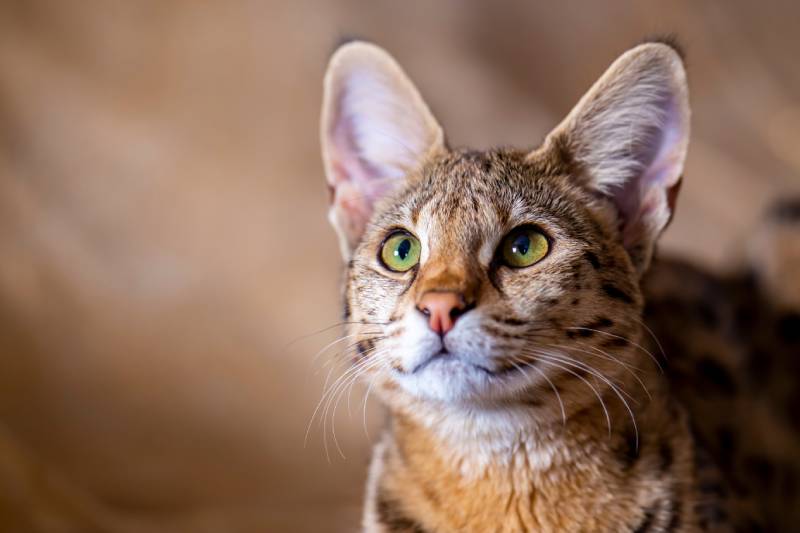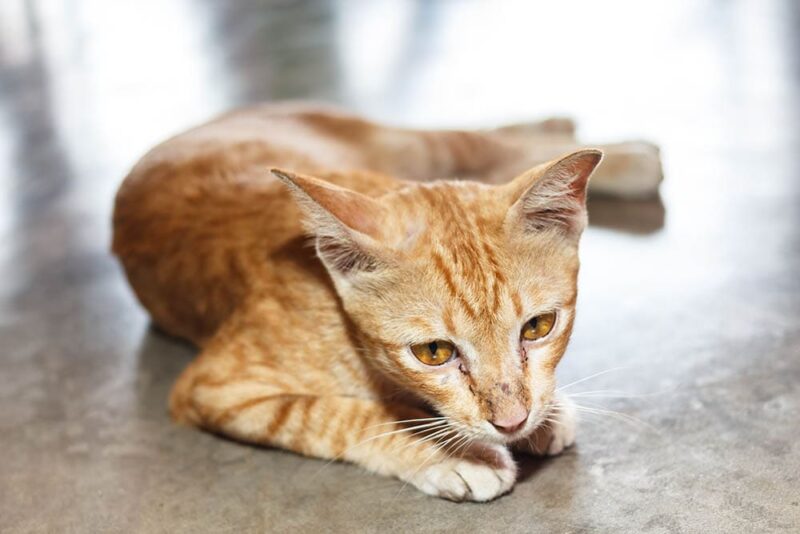11 Surprising Savannah Cat Facts
By Beth Crane
Updated on
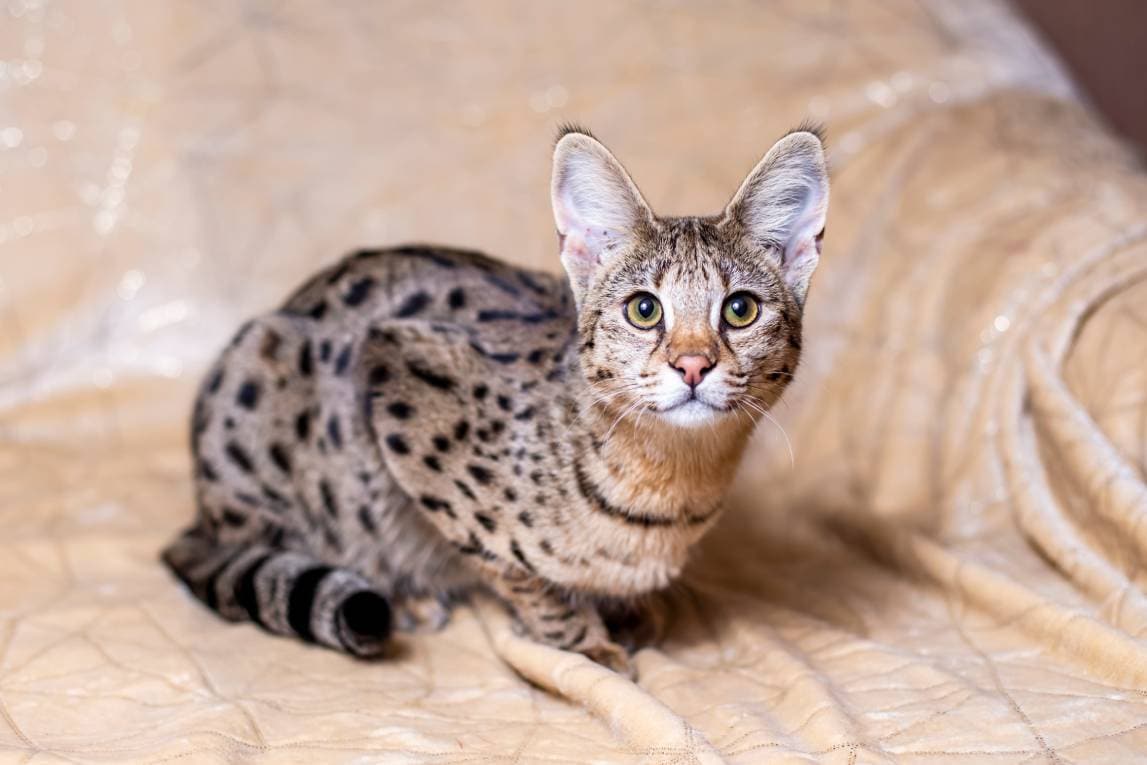
The Savannah cat is a fairly new breed, but they’re certainly one of the most interesting. These wild cats aren’t for the faint of heart (or small of house), but they’re still domestic moggies despite being different from your average house cat. We’ve listed 11 surprising facts about the Savannah cat that’ll endear you to this unique breed!
The 11 Facts About Savannah Cats
1. Savannah Cats are a Hybrid
You could probably tell that Savannah cats aren’t your ordinary felines. Savannah cats were first created by breeding an African Serval (Leptailaurus serval) with a Siamese cat. The kittens born to these two cats result in the F1 Savannah cat; F1 means the kittens have a parent that is 100% Serval.
During the Savannah’s early days, the cats allowed to form part of the breeding program included Ocicats, Egyptian Maus, and Oriental Shorthairs. However, outcrosses to breeds other than the Savannah cat are no longer allowed since most that are kept as pets can have kittens.
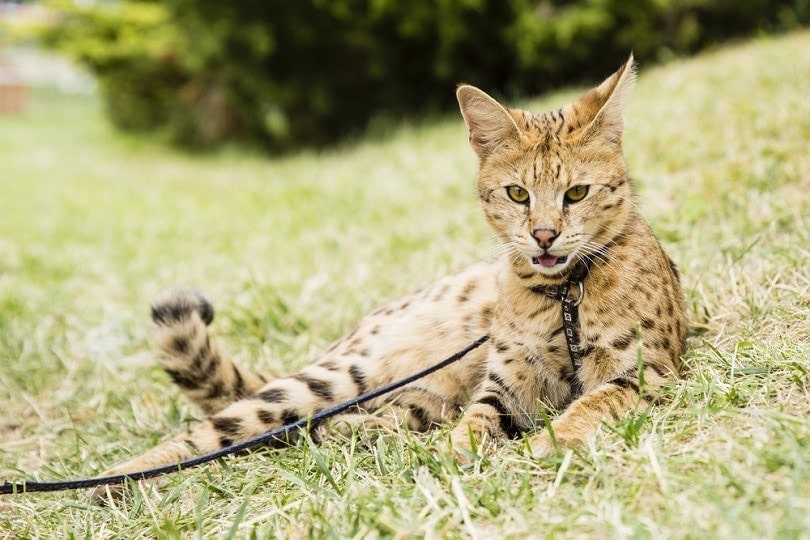
2. They’re Big!
Savannah cats are long, muscular felines. A typical Savannah cat, such as an F4 or F5, will weigh up to 18 pounds, which is a little larger than your average house cat. However, the more Serval DNA a Savannah cat has, the larger they typically are.
F1 and F2 Savannah cats are much larger, with the males sometimes weighing upwards of 40 pounds and being comparable to the size of a medium dog! Because of the size of early-generation Savannah cats, they can fetch a high price.
3. They Have Different “Generations”
Many Savannah cats are referred to with a “generation” number, such as F1, F3, etc. This is because of how they are bred. The amount of serval DNA in a Savannah cat depends on the parents. If a Serval and a domestic cat are bred together, the Savannah offspring will be F1 (F for “Filial number”).
They would have 50% Serval DNA, and the males would be sterile. F2 Savannah cats have a Serval grandparent, and F3 cats have a Serval great-grandparent, etc. Pets are often F4 or more but still retain many wild traits.
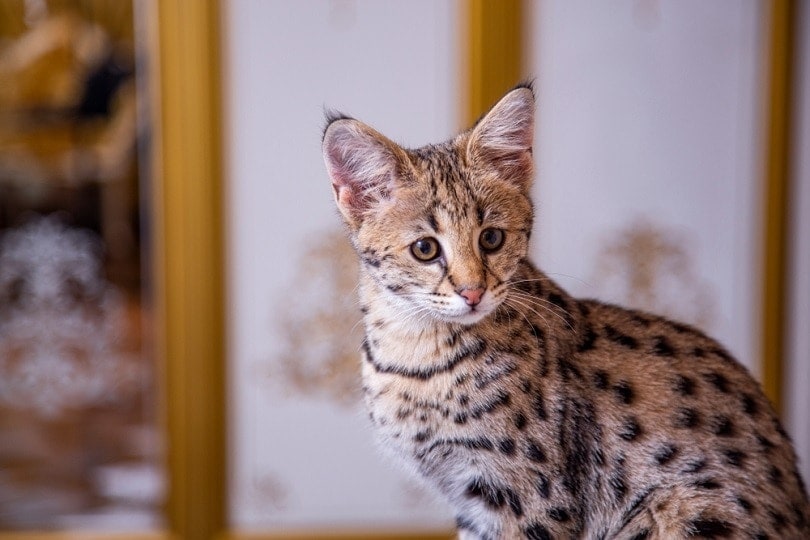
4. Which “Generation” a Savannah Is Determines Where They Can Legally Live
Because of the Serval traits early generation Savannah cats can have, some States in the US have restricted (or even banned) them. F4 or 5 Savannah cats are mostly treated as domestic pets and freely allowed, but some places are more restrictive.
New York allows F5 Savannah cats or later generations only, whereas New York City outright bans any generation! This also applies to different countries, with Australia banning the import of any generation of Savannah cat.
5. Savannah Cats Come in Many Colors
One of the first things you’ll notice about the Savannah cat is how beautiful their striped and spotted coat is. Most Savannah cats sport the golden bronze colors of the Serval, but they can come in a range of stunning coat colors. Show-allowable colors of Savannah cats include:
- Silver
- Black
- Brown
- Lavender
- Sable
- Snow
They can also be shown with tabby markings, which are often seen in later generations of Savannah cats.

6. They Claimed the Top Spot for the World’s Tallest Cat
Servals are tall and svelte cats, and the early generations of Savannah cats also inherited this trait. In 2023, the tallest cat in the world, according to the Guinness Book of World Records, is a male Savannah cat named Fenrir.
Fenrir is an astounding 18.85 inches tall; that is the same height as many medium dog breeds! Servals usually only grow to 14 to 17 inches tall, so Fenrir truly is the largest of his kind!
7. They Like Water
Savannah cats are well known for their wild traits. However, the behavior inherited from their Serval parents isn’t limited to mischief. Savannah cats are famous for their love of water and are often curious about various water sources.
While their curiosity might make your Savannah more inclined to play with water (or even step into it for a swim!), there is no guarantee they’ll all be happy to get wet. Many cats are averse to water, which can make them uncomfortable or even scare them.

8. They’re Highly Intelligent
Savannah cats are very intelligent. Because of their curious nature and need for stimulation, owners often have elaborate set-ups of toys, climbing equipment, and outdoor spaces (known as catios).
Savannah cats can become destructive if they’re not appropriately stimulated and given enough chance to exhibit natural behavior. Their intelligence means that Savannah cats are often easily harness-trained. Interestingly, most adult cats are about as intelligent as a 2-year-old child.
9. They Can Have Some Devastating Health Issues
Savannah cats are generally healthy but are at risk of inheriting or developing health issues. There are a few health problems that Savannah cats are more prone to:
- Pyruvate kinase deficiency (PKD): A genetic condition that causes a deficiency of an important enzyme that prevents red blood cells from breaking down too quickly (pyruvate kinase).
- Progressive retinal atrophy (PRA): It is an inherited condition that causes the slow, progressive breaking down and degeneration of the eye’s retina. There are early-onset and late-onset forms of this disease.
- Hypertrophic Cardiomyopathy (HCM): It is a condition in which the heart muscle becomes enlarged and can lead to congestive heart failure.

10. They Were Bred In the USA!
The original Savannah cat was bred in 1986 after a Serval male had mated (in an unplanned mating) with a Siamese female owned by Judee Frank. This kitten, known as Miracle, was the first hybrid of her kind.
She was renamed Savannah and rehomed, and she had her first litter in 1989. After that, breeding back to Servals began, and TICA (The International Cat Association) finally awarded the breed championship status in 2012.
11. They Retain Wild Characteristics
Because of their size, exercise needs, and wild traits, many breeders of Savannah cats don’t recommend placing F1 or F2 cats with families with small children.
While they are not wild animals, early-generation Savannah cats retain an enhanced size and strength, and these traits can be harmful to small children (or even smaller pets). This is also the reason why Savannah cats are outright banned in some states, such as Georgia.

Conclusion
Savannah cats are unique and beautiful, with huge personalities to match! They’re intelligent and bold and become the center of attention once adopted. In the earlier generations, these tall and lithe cats are hybrids of wild animals. Their need for adventure and stimulation, together with their intelligence and physical prowess, make the Savannah cat ideal for active owners who adore adventurous pets!
Featured Image Credit: Eric Isselee, Shutterstock

